Welcome to Shark Attacks in California.
With 307 records of shark attacks, California ranks third on the list for the number of shark attacks in the world. The majority of them were unwanted.
Luckily, only 24 cases resulted in fatalities, the most recent transpiring in 2021. The first recorded shark attack in California occurred in 1851, and the final occurred in October 2022.
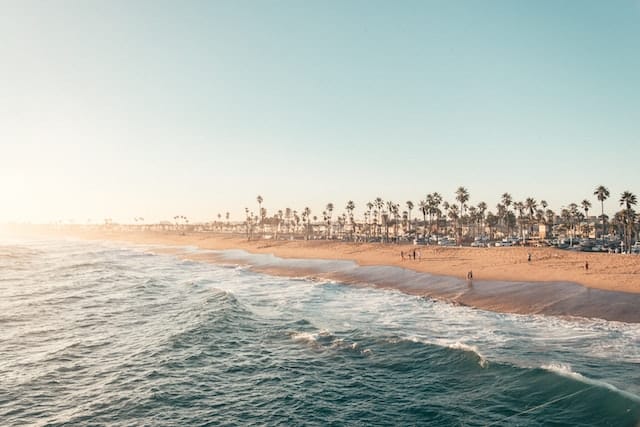
The Redwood National Park, Disneyland, Hollywood, and sharks are all things that exist in, and have come to be associated with, California. Although they are prevalent in the waters of all of California’s coastal counties, sharks rarely bite people there.
The great white sharks (Carcharodon carcharias) are responsible for at least 180 of California’s 203 documented shark attacks since 1950. The number of encounters with sharks rises as more people enter the sea.
Therefore, it is crucial to comprehend the function of great white sharks in California. Here, we’ll discover what distinguishes a great white shark from other sharks. Then, we’ll discuss the several regions of California where you have the best chance of seeing one of these incredible apex predators.
We’ll discuss the significance of great whites and why they’ve been seen more frequently in California waters in recent years. Finally, we’ll go through a few essential safety procedures when swimming with sharks.
Types of Sharks in California
Wherever you reside on California’s coast, there’s a good chance you’ve seen a shark or two lurking on the beach. This is so because some shark species prefer the Pacific coast’s cooler climate.
While it’s easy to spot numerous shark species along the entire west coast, the California coast is home to a particularly large number. Whether you are surfing, boating, or engaging in another water sport – paying constant attention to your surroundings is critical.
To learn more about the many shark species in California, continue reading below.
#1 Great White Shark
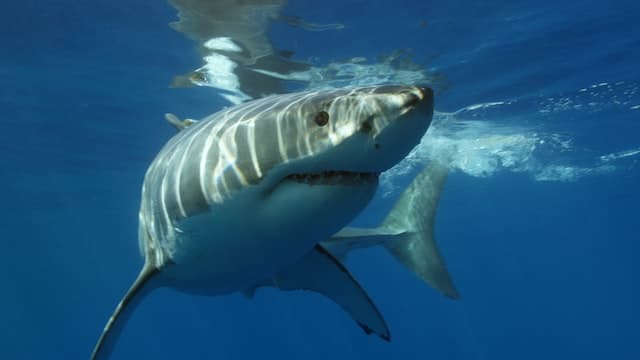
A great white shark can grow to a length of more than 20 feet and is estimated to weigh at least 2 tons. The great white shark may cover a large ocean region in its lifespan and is constantly on the move.
Those who have spotted one of these sharks close to the shoreline have probably come across a juvenile species of the great white shark, which are more common in California. This is because they frequently search for other food sources and can typically find more farther inland.
#2 School Shark
The school shark is often found off the Pacific coast of the California area and is known for migrating towards kelp beds. They grow to 5-7 feet in length and are considered relatively slender.
The school shark is not a threat to humans. They tend to flee quickly when they fear one is nearby. Most school sharks do not desire to be anywhere near divers or people.
#3 Sevengill Shark
This kind of shark is well known for traveling towards kelp beds, and you can frequently spot them off the Californian coast of the Pacific Ocean. They are supposed to be relatively slim and typically reach about 5-7 feet in length.
The school shark is not dangerous to people; they often leave when they sense that one of us is around. Most school sharks don’t want to be near divers or people.
#4 Pacific Angel Shark
The Pacific Angel Shark differs significantly from most other shark species and inhabits kelp beds and sandy flat places on the ocean floor. It has a flattened body, and its pelvic and pectoral fins are substantially larger.
The Pacific angel shark, known as an ambush predator because of its body form and color, can quickly creep up on its prey. Divers who have come across this species of shark have only been able to notice it when the creep shark opens its eye.
#5 Horn Shark
The Horn sharks are the most challenging to notice. However, they live near the ocean floor’s seagrass and stony reef regions. They tend to blend seamlessly with their surroundings because of their colors and markings.
The Horn Shark’s tendency to remain in one part of the water due to its prolonged movement is another intriguing feature. They typically stay within a 10,000-square-foot radius of their residence because of this.
More About Great White Sharks
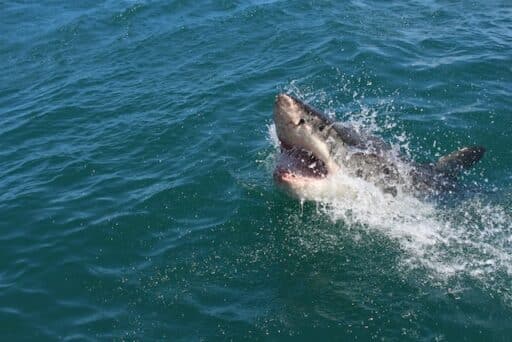
Great White Sharks are vast-sized, cold-blooded predatory fish. They can grow to a maximum length of 26 feet. However, most only reach 13 to 14 feet. While youngsters stay near the calmer waters of the coast, adults swim in vast oceans.
Large fish, sea turtles, seals, sea lions, stingrays, and other sharks are the main prey for great whites. Most individuals have a legitimate fear of sharks due to the media, although your chances of getting bitten by a great white shark are very meager in California.
The coastal waters of California are nonetheless home to many great white sharks. Young great whites congregate along the coast and appear to migrate in response to the seasons.
Summertime in California, when water temperatures are at their highest, is when you’re most likely to see a great white. Large adults typically hunt in deep ocean waters. Most great white shark sightings near beaches are of young sharks, which usually avoid people.
How Many Sharks Are There in California?
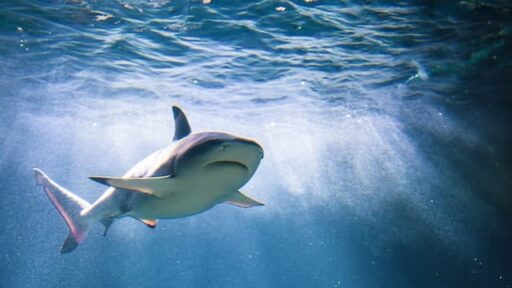
Estimating shark populations in California presents a unique set of challenges. Firstly, counting them accurately is no easy task due to their aquatic habitat, and secondly, they are constantly on the move, making tracking a complex endeavor.
Nonetheless, recent research suggests that white shark populations are showing signs of resurgence. For instance, over 300 young great white sharks have been spotted in the coastal waters of northern California, indicating a positive trend. However, it’s important to note that shark numbers can vary significantly throughout the region.
California’s coastal waters provide a habitat for great white sharks, but their distribution is not uniform. Certain areas, such as Bird Rock, Tomales Point, Ano Nuevo Island, and the Farallon Islands in Marin County, boast the highest concentrations of these apex predators.
Now, let’s delve into the regions where shark attacks in California occur most frequently and review any notable incidents from the past year.
Places in California Where Shark Attacks Happen Most Frequently:
Sharks are prevalent throughout the state. This claim is quickly corroborated by the fact that there have been 307 attacks in the region since the 1800s, to be exact. Some particular areas have seen more occurrences than others. Let’s look at the top 6 locations in California for shark attacks.
#1 Los Angeles County

Shark attacks possibly occur most frequently in Los Angeles County, California. The Global Shark Attack File lists thirty-nine events between 1879 and 2019.
The majority of the attacks were uncalled for. Twelve attacks were unprovoked, two were fatal, two have not yet been determined to have involved a shark, two were classified as “watercraft disasters,” and two as “sea disasters.”
The following locations in Los Angeles County were the scene of these attacks:
Santa Catalina Island; Santa Monica; Santa Monica Pier; Venice Beach; Broad Beach; Long Beach; Malibu.
2# Humboldt County
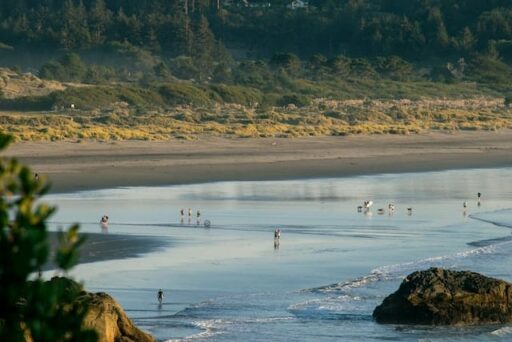
In terms of shark attacks in California, Humboldt County recorded 19 incidents – with three classified as “watercraft disasters.” White sharks and leopard sharks were the types of sharks most commonly involved.
Moonstone Beach, Samoa Beach, and Shelter Cove are just a few locations in Humboldt County where assaults have occurred.
3# Santa Cruz County
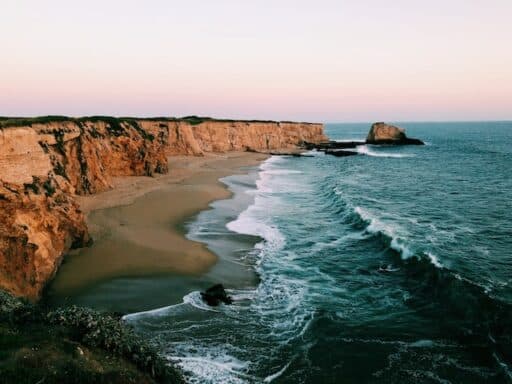
There were 16 shark attacks in Santa Cruz County, including at Capitola Beach and Sand Dollar Beach.
One of the attacks has not yet been linked to sharks, and four have been classified as “watercraft mishaps.” Ben Kelly, age 26, was bit by a white shark on May 9, 2020, during a surfing accident in Santa Cruz County, which resulted in the only fatal attack.
4# Sonoma County
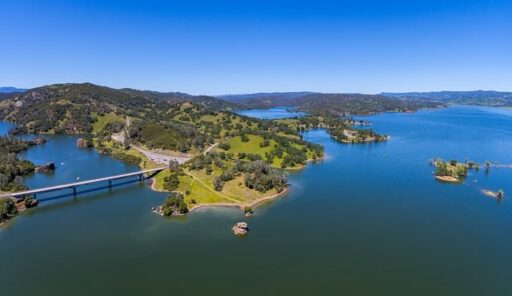
Sonoma County, home to spots like Bodega Rock, North Salmon Creek Beach, and Salmon Beach, has witnessed a total of 15 documented shark attacks in California. Fortunately, none of these incidents, even though some involved white sharks, resulted in fatalities.
5# San Francisco

In San Francisco, there have been ten California shark attacks, of which two were deadly. In 1984, there was one attack at Steinhart Aquarium. Fortunately, the injured man made it through the seven-gill shark assault.
Most of San Francisco’s attacks took place a long time ago. Shark attacks have decreased in the area since the last one, which occurred in 2005.
6# Huntington Beach

Nine shark attacks have been reported in Huntington Beach. The injured persons sustained lacerations, abrasions, and puncture wounds, and three of them haven’t been definitively linked to shark attacks.
California Shark Attacks
Four shark attacks happened in California in 2021. All of them were unprovoked, and everyone involved survived. Let’s find out more about each.
#1 June 26, 2021, Shark Attack
Nemanja Spasojevic, a 38-year-old man from San Francisco, visited Gray Whale Cove State Beach in San Mateo County on Saturday, June 26, to go snorkeling. He dove in at eight in the morning. He took some crabs and then went swimming.
Before returning, he paused to get a crab but left it in the ocean. He felt something biting his leg just as he came to the surface. Then noticed the shark and began to retaliate. Fortunately, the shark swam away.
Ten lacerations were sustained by Nemanja Spasojevic on the back of his right leg. A young white shark measuring 6 to 8 feet long had perpetrated the attack.
#2 June 30, 2021, Shark Attack
A shark bit a 15-year-old boy named Eddie Cahill on June 30, 2021, at Parsons Landing in Emerald Bay on Catalina Island. He was one of the 11 Boy Scout troop members in the canoe at the time of the attack. Eddie was seated in the front of the canoe.
He suddenly felt as though he had run into a rock. He looked down into the ocean. In the end, a shark bit Eddie’s hand before swimming away.
#3 July 21, 2021, Shark Incident
Since nobody was hurt during this attack, this may only be considered a minor incident.
It occurred on July 21, 2021, at Capitola Beach in Santa Cruz. Jennifer Rand Romney was the concerned party. She was surfing among other people on an eight-foot board when something struck her friend’s board underwater.
She then felt it strike her leg and her board. Jennifer didn’t see the shark, but it was established that a shark had been involved because young sharks were frequently found nearby, even in shallow water. In her 20 years of surfing, Jennifer claimed, “I have never had a sea lion make personal contact. What else could be that big and long and make such a brutal hit? I wasn’t sure.”
#4 October 3, 2021, Shark Attack
A 38-year-old man named Eric Steinley fell prey to a shark attack in Sonoma County’s Salmon Creek Beach, located just north of Bodega Bay. He went surfing at the shore when a shark bit him from below, and it bit him as he was lying on the board with his stomach exposed. He tried to defend himself after realizing it was a shark.
#5 October 16, 2022, Shark Attack
A shark attack in Northern California on a 31-year-old surfer left him with horrifying bites on his right thigh and leg. He is still in recovery at the time of writing.
Jared Trainor told a newspaper in Humboldt County that he was thrown from his board on a Sunday visit to Centerville Beach. He claimed the monster bit his right leg, as well as his board which was encased in its jaws.
The skilled surfer reportedly grasped the shark’s body underwater and pushed at its head with his second leg until the shark let him go and swam away. Trainor returned to the shore where another surfer was using a phone to ask for assistance.
I don’t recall the first interaction, he admitted to the newspaper. It all seemed to happen so rapidly.
His open wounds, which were about 19 inches, or the width of the shark’s jaws, were stapled shut by doctors.
The Time of Year Great White Sharks Make Their Appearance in California
Making a beach trip for fun in the sun comes naturally when the weather improves and the Pacific gets a little warmer. Sadly, this is also the time of year when white sharks frequent the deep ocean. Hunting season runs explicitly from April to October.
Great white sharks will approach the shoreline closer and closer as they look for food sources. Shark activity is at its peak from 8:00 am to 6:00 pm. However, sharks like to swim especially near the shore during dawn, dusk, and night. It is advised to avoid swimming alone or at night if you wish to avoid feeding times or becoming a shark’s main meal. It is not called “shark week” for no reason.
Not quite though, because as previously stated, the likelihood of seeing or being attacked by a shark is relatively small. It’s like waiting for it to rain in California while carrying an umbrella and worrying about getting wet.
How to Stay Safe in the Water

Despite popular belief, great white sharks don’t actively hunt for humans in the water. Most unprovoked shark attacks, according to scientists, are instances of mistaken identity. In other words, the shark misidentifies a human as a slightly more appetizing seal.
Always enter the ocean with a friend to reduce your danger of being attacked by a shark. Do not splash excessively, and never go into the water while bleeding.
Avoid using designs with solid contrast or bright colors, as sharks are attracted to these. Pay attention to shark advisories; avoid the ocean if beaches publish them. Finally, prevent regions with fishermen, fish schools, or seal or sea lion populations.
Why are Great White Sharks Important?
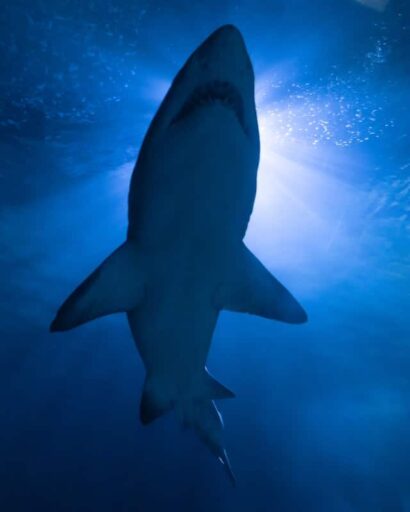
Great White Sharks are a keystone species. They are, therefore, essential to the environment’s sustained health and the balance of the entire food chain. Sharks contribute to preserving the fragile ecosystem of the marine environment, which protects the health of the whole ocean.
Due to the shark fin soup industry, overfishing, ocean acidification, climate change, and habitat loss, shark populations have decreased by 90% from their historical levels. Sharks are essential to our seas, and our oceans are necessary to us.
Therefore, taking immediate action is critical to preserve great whites and all sharks.
Summary on Shark Attacks in California
Due to the shark’s slow digestion and the high proportion of bone to muscle and fat in humans, humans are not the ideal prey. As a result, great whites break contact after the first bite in most documented instances.
Instead of fatal organ loss or complete ingestion, blood loss from the first bite typically causes the rare cases of fatalities.
The following activities are outlawed in most places: trapping, cage diving, feeding, towing decoys, baiting, and chumming for its sizable and highly predictable migratory significant Great White Shark population.
The protection of the sharks and the general welfare are the two objectives of these limitations.
Thank you for reading this article! If you want to read about other shark attacks around the U.S go and check out our post about Shark Attacks in Florida.
Join our Forum for free today!

- Signs Of Coyotes Visiting Your Property - July 23, 2024
- Beware Of The Rabid Wolf Spider In The United States - July 23, 2024
- 12 Flowers & The Beautiful Birds They’ll Attract To Your Yard - July 23, 2024





